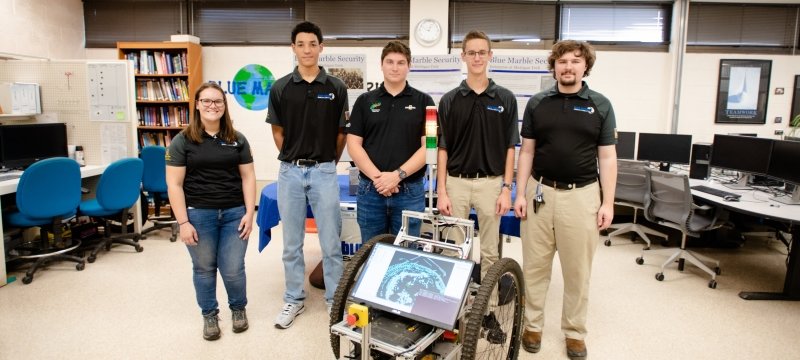Smooth Your Transition to Industry with Capstone
Employers characterize Michigan Tech students as being ready “to hit the ground running.” Be prepared to put your best foot forward with the help of the Department of Electrical and Computer Engineering’s Capstone program. One to two semesters before graduation, each student is required to complete a Capstone project, which can be fulfilled through either a Senior Design or Enterprise option. Choose from a wide variety of exciting projects to cap off your undergraduate career right and help you transition to industry. No matter what you pick, both Senior Design and Enterprise deliver a real-world engineering-design experience.
Senior Design
Our “Discover, Design, Deliver” philosophy is at the cornerstone of our Senior Design program, in which students experience the entire design process of a project as it would be in industry. Students enrolled in Senior Design work as teams on client-based engineering projects, under the consultation of a client representative and the direction of a faculty advisor. Our Department’s Senior Design experience spans a full year, by the end of which a team has delivered design reviews, a final report, a formal presentation, and an end product to its client. In Senior Design, you’ll learn more about not only design, but also the business of engineering, including
- Project management
- Teamwork
- Documentation
- Intellectual property
- Budgeting
- Ethics
Senior Design affords students not only solid, practical experience, but preparation for their first job. Past industry sponsors have included American Electric Power and Oshkosh Corporation.
[ Learn More About Senior Design ]
Enterprise
Enterprises are student-led companies embracing rich experiences in engineering design, team building, project management, and end-to-end original product development. Just as in Senior Design, Enterprise teams work under the direction of a faculty advisor.
The program gives teams of students from varied disciplines the opportunity to work for several semesters in a business-like setting to solve real-world engineering problems supplied by industry partners.
Join one of the Department’s many Enterprise teams, and tailor your degree to suit your own interests. Our Enterprises work on innovative projects spanning a wide range of areas.
- Blue Marble Security
- Robotic Systems
- Wireless Communication
